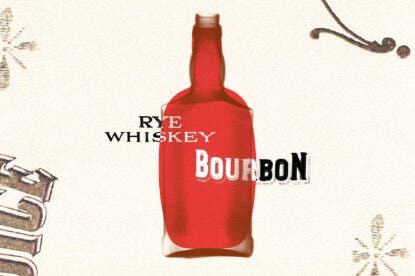There’s a worn-out adage that a wise wine buyer chooses the second-cheapest bottle on the menu. An internet search can debunk that myth as quickly as you click the enter key, but such advice reveals a truism of buying wine: price feels like a minefield.
“We don’t necessarily think in terms of price, but in terms of value,” says Page Knudsen Cowles, managing partner at Knudsen Vineyards in Dundee, Oregon.
Price itself isn’t a litmus test for quality or taste. That concept makes sense as a bottle of wine moves through the creation process. And that process contributes to the price, an amount that producers hope consumers deem to be worth it.
“We aren’t selling chemicals in a bottle,” states the Silicon Valley Bank 2019 State of the Wine Industry Report. “We are selling value, and for a luxury good, like wine, that is defined as perceived quality plus experience, divided by price.”

So what contributes to a wine’s price?
Location, for starters, has a huge impact on price. “There are regions known for producing great values, whether because of economies of scale, long-term experience making wine, lower land value or larger crop tonnage,” says Adam Sager, co-president of Winesellers LTD, a global importer/marketer located in Niles, Illinois. But there’s a flip side. “There are also regions known for producing very expensive wines, for the opposite reasons: limited experience, small production and extremely high land values,” he says.
Every vineyard and wine region needs skilled employees, and that cost trickles down to the bottom line. Handcrafted wines—those pruned, harvested and sorted by people instead of machines—often cost more. “All these ‘hands’ throughout the process ensure consistency and quality of the product as well as increasing labor costs, which ultimately influence the cost of the wine,” says Knudsen Cowles.
Sometimes, machines are necessary for harvesting and sorting, or if there’s a labor shortage. Initial equipment costs could be high, but when the systems run efficiently, it may save dollars.
“The labor shortage in our area is forcing growers to look to efficient types of mechanization and to utilize state-of-the-art technology in the vineyard to combat the issue of not having the labor force needed to do everything by hand,” says Meaghan Frank, general manager at Dr. Konstantin Frank in New York’s Finger Lakes region.

Besides vineyard equipment, cellar necessities like filters and oak barrels can be very costly, says Frank. New French oak barrels can cost up to $1,000 each, according to Frank and Knudsen Cowles. Those dollars factor into the bottom line of a wine.
“High-volume wines available at lower price points may use oak staves, oak chips, or even an oak-flavor additive to impart similar flavors at a lower cost,” says Knudsen Cowles, who uses only French oak. Storage for several years during the aging phase is another consideration. “It can feel like a long time to have money sitting on the shelves,” she says.
Vintage influences pricing, but that depends on region. In the Willamette Valley, Knudsen Cowles says that the quality of the grapes has been consistent over the last half-century, which has allowed producers to offer wines at a steady prices.
In other places, severe weather can impinge on yields or even nearly decimate a vintage.
“Vintage plays a big role in the final cost of the wine, especially in cooler climates like the Finger Lakes, where there is variation from year to year,” says Frank. She points to difficult vintages from 2013–15. “For some varieties, we experienced a 50–70% shortage of grapes, which impacted the amount of wine we were willing to produce and pushed up the prices due to that scarcity.”
Sager says that larger wineries can typically handle severe weather and “economic storms” better than smaller producers. The seven largest California wineries are behind approximately 70% of U.S. wine sales.
The Factors of a Price of Wine:
• Location
• Labor Costs
• Equipment Costs
• Aging Costs
• Vintage
• Winery Size
• Packaging
For anyone who’s hauled a bunch of wine bottles to the recycling bin after a party, it’s apparent that some bottles are fancier, heavier, adorned with special labels or equipped with unique closures. Such packaging material is a line item on the producer’s balance sheet.
“Bottles are the most expensive of those, then closures, then labels,” says David Ramey, founder/winemaker at Ramey Wine Cellars in Healdsburg, California.
Sager says that packaging materials account for a “large percentage of the cost of inexpensive wine, but as you climb the price points, dry goods become less of the percentage of the total cost. That’s why you generally see inexpensive wines in inexpensive glass and more simple packaging.”
Still, some wineries consider packaging an important part of their brand.
“The packaging for a wine bottle is sometimes a signal of the quality, and due to this, wineries will make the packaging for high-end wines more sophisticated than their entry-level wines,” says Frank.
Vineyard location, regional circumstances and packaging are quantifiable, but don’t forget the subtle and not-so-subtle influences of reputation and critical commentary.
“Just as people pay more for certain chefs’ meals, they’ll pay more for certain winemakers’ wines,” says Ramey. “In the end, it’s a blend of quality, critical and popular perception, and scarcity.”
Last Updated: May 5, 2023















